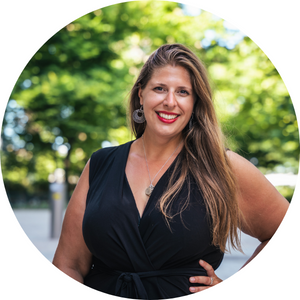Haven’t quite gotten the hang of automating your savings yet? You’re not alone. Between our over-reliance on credit cards, the surprise bills that always seem to hit at the worst times, and a ballooning inflation rate, it can be hard to set aside money for the future.
But it’s never too late to start saving—and you don’t have to sock away a lot of money for it to make a big impact on your life and finances, either. The 52-Week Money Saving Challenge is an easy and approachable way to start saving, dollar by dollar. Wondering how it works? Read on.
What is the 52-week money saving challenge?
The concept is simple: you match the dollar amount of your savings to the week of the year (or challenge). For example:
- Week 1: $1 | Week 2: $2 | Week 10: $10 | Week 20: $20 | Week 52: $52
When you cross the finish line, your total savings would be $1,378 by the end of the 52-week money-saving challenge. If you can even save more than that, go for it. Double or triple your deposits each week to see your savings grow faster.
You also don’t have to wait until the dawn of a new year to get started – pick any time of the year and start saving for 52 weeks. You’re the boss!
What I love about the 52-week money challenge is how easy it is. Once you start seeing your savings grow, it actually becomes fun. While you won’t be able to retire overnight with the 52-week money-saving challenge, you will develop good money-saving habits and put away a little extra cash for emergencies or special purchases. The sooner you start this 52-week challenge, the better.
How to do 52-week money-saving challenge
Now that you know what the 52-week money challenge is all about, it’s time to get started. Follow these steps to get started and take on the challenge like a champ!
Step 1: Automate your savings
In his book The Automatic Millionaire, David Bach says that you don’t have to earn a lot to become an automatic millionaire. You just need to save small amounts regularly. He describes this as the “Latte Factor”: if you put away the cost of a coffee every day (say, $4), that small amount will gradually grow into a big pile of cash thanks to the magic of compound interest.
But instead of dropping two Toonies into a jar, Bach argues you should “pay yourself first” by transferring funds into a savings account right away. That way, you don’t see the money sitting in your bank account and won’t miss it.
Take this same approach for the 52-week savings challenge by automating your savings. It’s easy: most Canadian banks allow you to set up automatic deposits to your chequing account, high-interest savings account, or investing account. That way, you aren’t looking at a massive jar of cash, tempting yourself to spend it.
Read more: The best high-interest savings accounts in Canada
Step 2: Get an auto-saving app
There are some ingenious budgeting apps that can help put your savings into overdrive. It’s easy: just download the app onto your phone and link it to your accounts. Some budgeting apps like You Need a Budget can help control your spending and show exactly how much is left over at the end of the month. YNAB has proven to be a very effective app: new YNAB users save on average $6,000 in their first year (!). Other apps like PocketSmith can forecast cash flow up to 30 years in the future, and some like Paymi will even give you cash back on your spending. All of these apps can help put mo’ money into your 52-week challenge fund.
Wealthsimple Invest also offers two fantastic features that will help you crush your 52-week goal. The first is Overflow, which automatically invests excess money sitting in your bank account. All you have to do is set an amount of cash you want to keep in your chequing account, and then once a month, any money on top of that will be automatically transferred into your Wealthsimple account. On the flip side, Roundup “rounds up” your everyday purchases to the nearest dollar and puts that spare change to work in a Wealthsimple Invest account. Both are excellent (and free!) features for boosting your savings during this challenge.
Read more: Wealthsimple review
Step 3: Make extra payments
Let’s say you get an annual bonus or a hefty tax refund. Instead of spending it, put those extra funds toward your 52-week savings challenge. Dump it into a high-interest savings account as a one-time windfall bonus and go back to your regular deposit routine, or you can consider it as your contribution for several other weeks in advance. For example, if you got $100 as a birthday gift, maybe you cross out weeks 52 ($52) and 48 ($48). This allows you to keep the lower dollar-amount weeks for later so you won’t have trouble filling them.
You can also top up your 52-week savings with some easy ways to make money online. For instance, a fast way to earn extra cash is by getting a cash back credit card, which allows you to earn a percentage of your spending back in cash.
Read more: The best cash back credit cards in Canada
Step 4: Use visuals
Visualization is a powerful tool. Many people find success in using a chart or graphic to keep track of their progress. It will help motivate you to continue your new savings habits.
For visualizations, check out Map Your Progress. It can create graphics you can fill in with colours every time you do something. It’s fun and keeps you motivated.
Benefits of doing the 52-week savings challenge
You won’t get rich just by doing this challenge, but you’ll start to see the value of compound interest, especially if you’re putting your money into a high-interest savings account, or even better, investing it. We’ve talked about the importance of investing early and often before. It might seem like a fun little exercise, but there are many benefits of doing the 52-week money-saving challenge, including:
1. You'll be more engaged with your money.
Doing a challenge like this is very similar to the adult learning theory behind gamification. Research indicates adults who play a game while learning are more likely to be engaged with a subject and be able to stick with it.
The same goes for your money. If you play a game or give yourself a gamified challenge like this one, you’ll likely stay engaged in this process and see it through until the end.
2. You’ll develop a healthy money-saving habit.
In James Clear’s book Atomic Habits, he talks about how small habits, compounded over time, can have a surprisingly powerful impact on your life. The 52-week challenge is more than just saving a certain amount of money for a year. It’s about developing a healthy savings habit – one that will be hard to break. According to author Charles Duhigg, most habits take about 30 days to form.
According to that theory, you’ll have formed a savings habit after only your fourth week of the challenge. As Clear says, habits are nothing more than automated behaviours learned from experience. I would suggest reading both books to understand the power of creating new habits – especially with your money.
3. You'll develop a pathway to investing.
Once you get used to saving cash each week, you’ll develop a healthy habit of socking away money for a rainy day. When you’ve started to accumulate savings, the next step is to start investing.
Getting started is a cinch and you don’t need a bundle of cash. If you’re comfortable with DIY investing, you can open an account with an online brokerage – a low-cost trading platform that lets you buy and sell stocks online. The best online brokerages in Canada can save you big bucks since you’ll be managing your own portfolio.
Read more: The best online brokerages in Canada
If DIY investing is not your thing, use a robo advisor – an automated investment service that can build you a customized portfolio and manage your funds. With a top-rated robo advisor, all you have to do is answer an online questionnaire about your financial goals and your risk tolerance, and using algorithms, it will make a recommendation for a personalized portfolio. Going this route can save you time and money: the robo advisor will do all the work of automatically monitoring and rebalancing your portfolio and it typically charges less than 1% in fees.
Read more: The best robo advisors in Canada
Parting words: Yes, you can!
Doing the 52-week savings challenge is about more than socking away a little extra money. It’s about developing strong savings habits and setting yourself up for a healthy financial future. If you follow the tips outlined above, these goals shouldn’t be too hard for you to accomplish, even if you are getting a bit of a late start. It’s not too late to adopt a good habit.
Read more: What does it mean to automate your finances and how to start?
Read more: All-purpose new year financial checklist to get your goals in order






